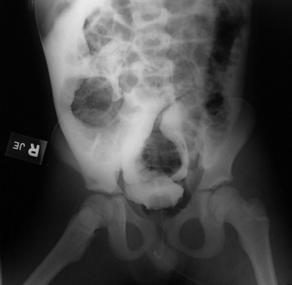Blunt Bladder Injury
Ivette Guttmann, MD and Hamish A. Kerr, MD, MSc∗, Primary Care Sports Medicine Fellowship, Division of Internal Medicine and Pediatrics, Albany Medical College, 724 Watervliet-Shaker Road, Latham, NY 12110, USA. E-mail address: kerrh@mail.amc.edu
Keywords
Bladder rupture
Bladder contusion
Hematuria
Introduction
The abdomen has a large surface area with an absence of bony support. Protective equipment in this area could undermine athletic performance, making this area prone to potentially serious injury.1 Fortunately, the bladder is located deep within the protective bony structures of the pelvis, making it fairly well protected from blunt sports-related trauma.
The bladder is a hollow organ that collects urine from the kidney. When the bladder is empty, it is protected, although not exempt, from injury behind the pelvic rami. An appropriate mechanism and sufficient force can still result in injury if a pelvic fracture is incurred. In the child, the pelvic bones are not fully developed, making the bladder more easily injured than in the adult.2
Epidemiology
Sports-related trauma causes about 10% of all abdominal injury.1 Bladder injuries occur in 1.6% of all blunt abdominal trauma cases.2 Bladder rupture is uncommon with blunt trauma because of its position; however, it has a mortality rate of 22% after blunt abdominal trauma.3
Mechanism: macrotraumatic
Bladder injuries can be caused by high-energy blunt trauma that disrupts the bony pelvis such as a direct blow to a distended bladder or a penetrating injury. Of all bladder injuries, 60% to 85% are from blunt trauma and 15% to 40% are from a penetrating injury.4 The most common non–sports-related mechanism of injury to the bladder is a motor vehicle collision. However, given the propensity of some sports for high-velocity contact and collision, injury to the bladder can occur. Overall, the most common sport to cause abdominal injury is cycling. Martial arts, softball, snowboarding, football, rugby, gymnastics, and hockey are just some of the sports with the capability to cause significant abdominal and subsequent bladder injury as a result of mechanisms such as acceleration, deceleration, and spearing. An example of such a force is a direct kick or blow to the abdomen during martial arts, a known discipline for having the potential to produce traumatic bladder injuries.1 Gymnasts are not immune from this type of injury; for example, gymnasts may develop severe bruising around the lower abdomen and anterior superior iliac spine by performing the “beat maneuver” on the uneven bars. Gymnasts at the lower competitive levels typically perform this skill, which involves hanging from the high bar and dropping the anterior pelvis and hips onto the low bar, and are consequently are at risk for developing a bladder contusion.5
Mechanism: microtraumatic
Another sport that can also injure the bladder by causing repetitive jolting is long distance running, generating transient bladder contusions. This can be caused by a combination of exertional forces and intra-abdominal pressure producing repeated impact of the flaccid wall of the bladder against the bladder base. The bladder may be empty or nearly empty while the runner is in action. This permits apposition of the surfaces of the bladder. This is manifested as transient hematuria. The variability of the state of filling one’s bladder from one occasion to another may therefore account for the inconsistency of occurrence of hematuria in the same runner.6 It is thought that partial filling of the bladder will prevent this type of insult. The partially filled bladder will provide enough tautness to its walls to counteract such exertional forces and increased intra-abdominal pressure.
Pathophysiology and classification
Bladder injuries are principally defined as contusions or bladder ruptures. Bladder rupture in the setting of blunt trauma may be classified as either extraperitoneal (70%–90% of cases) with leakage of urine limited to the perivesical space, or intraperitoneal (15%–25%), in which the peritoneal surface has been disrupted with concomitant urinary extravasation (Fig. 1), or it can be combined with both intraperitoneal and extraperitoneal rupture (5%–12%). Combined intraperitoneal and extraperitoneal bladder ruptures are mainly diagnosed during surgery.7
Bladder contusion
The most common type of bladder injury is a contusion. Bladder contusions, or a “bruised bladder,” are relatively benign, and this is usually a diagnosis of exclusion. Bladder contusion is an incomplete or partial-thickness tear of the bladder mucosa or muscularis, without complete loss of wall continuity. A segment of the bladder wall is bruised or contused, resulting in localized injury and hematoma.2
Extraperitoneal bladder rupture
Extraperitoneal bladder rupture is commonly associated with a pelvic fracture (Fig. 2), and an intraperitoneal bladder rupture is usually a result of blunt lower abdominal force on a full bladder.
Stay updated, free articles. Join our Telegram channel

Full access? Get Clinical Tree










